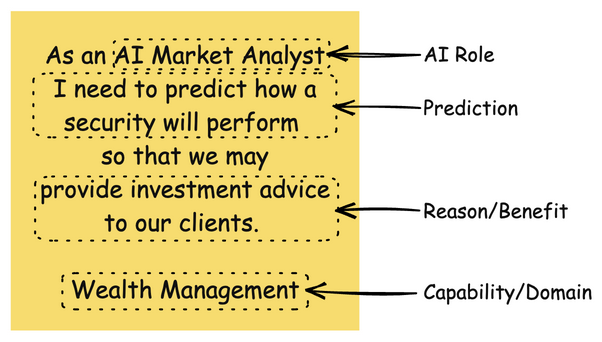Organizations are actively building artificial intelligence (AI)-based solutions, and more often than not, they’re taking an agile approach to doing so. Most agile teams choose to work with user stories to capture their high-level requirements. My experience is that you need to make a slight modification to user stories for AI development, something that I choose to refer to as “AI stories” rather than user stories. You are free to call them whatever you like.
Example AI Stories
The following two stories are excerpted from my forthcoming book, Building a Continuous Data Pipeline. The first one captures the desire to project the future price of a stock or bond (a security), and the second one captures the desire to predict insurance fraud.
Why We Need AI Stories
The fundamental issue is that AIs aren’t users. There are two implications of this:
- AIs take on different roles than users. While AIs have a role in business processes, ideally, they are used to augment the work of people; these are different roles than what people take. I note this by preceding all AI roles with the text AI.
- AIs predict or infer, they don’t want. AIs are prediction machines. What I mean by that is that you give them some input, and their output is a prediction/inference. In the case of the first AI story, it’s predicting the future price of a security. The second AI story asks to predict the chance that someone is trying to commit insurance fraud.
Format for an AI Story

There are four potential sections of an AI story:
- AI role. The role that the AI has within the overall business process, starting with ‘AI’.
- Prediction. What is the AI being asked to predict, in the format “I need to predict [SOME PREDICTION]”
- Reason/benefit. Why is making this prediction important to your organization?
- Capability/domain (optional). Many enterprises choose to trace requirement items, such as stories, back to higher-level enterprise capabilities or domains.
AI Stories in Context
The following table summarizes the trade-offs associated with AI stories and provides advice for when to adopt them.
Table 1. AI stories in context.
| Advantages |
|
| Disadvantages |
|
| When to Adopt AI Stories | When you are identifying stakeholder needs for the AI. |
Related Resources
- Artificial Intelligence and Agile Software Development: Use-Cases for AI Augmentation
- The Machine Learning Lifecycle: An End-To-End Look
- Power and Prediction: The Disruptive Economics of Artificial Intelligence by Ajay Agrawal, Joshua Gans, and Avi Goldfarb describes fundamental concepts about AI and its implications.
- Question Stories: Extending User Stories for Data
- User Stories: An Agile Introduction

